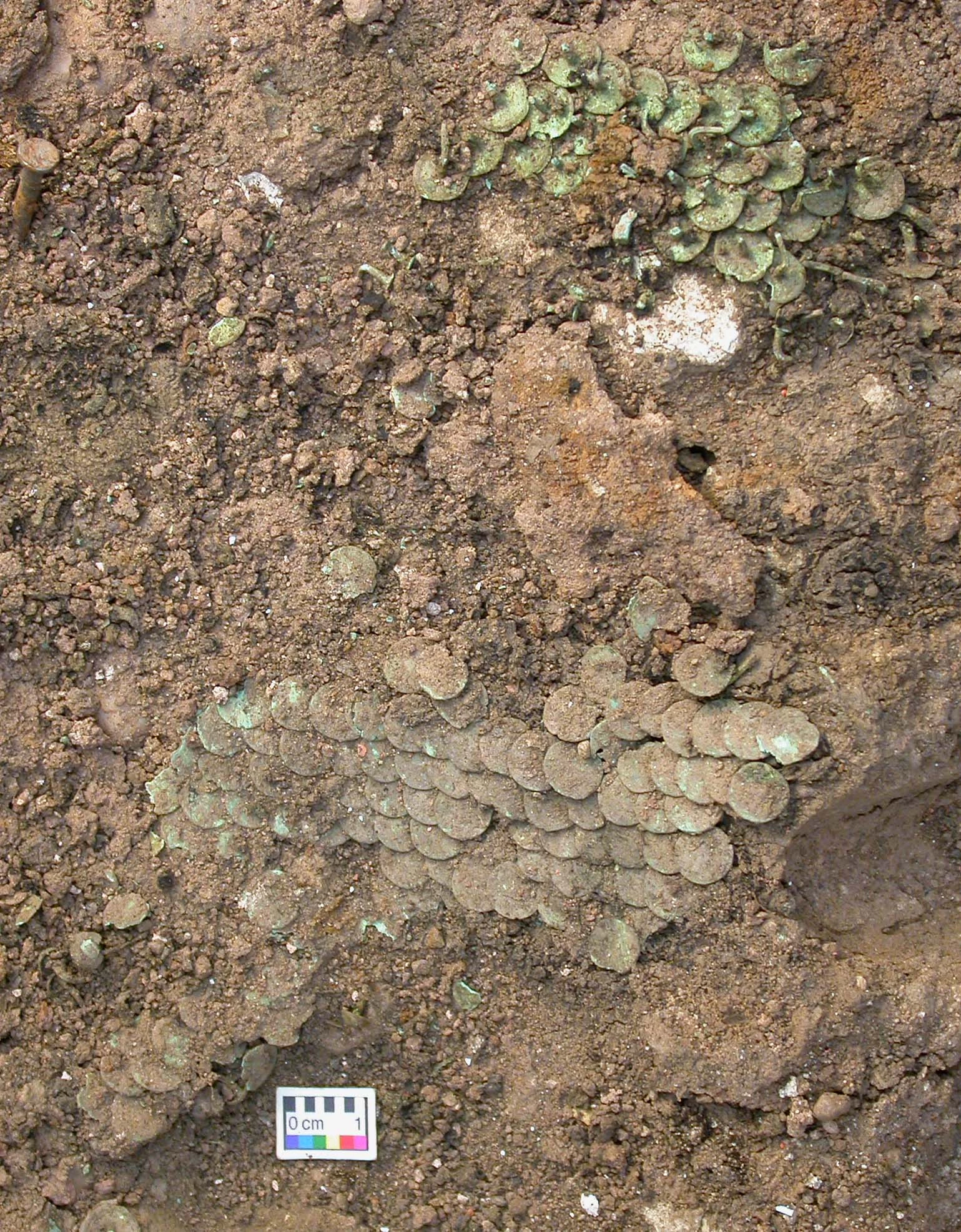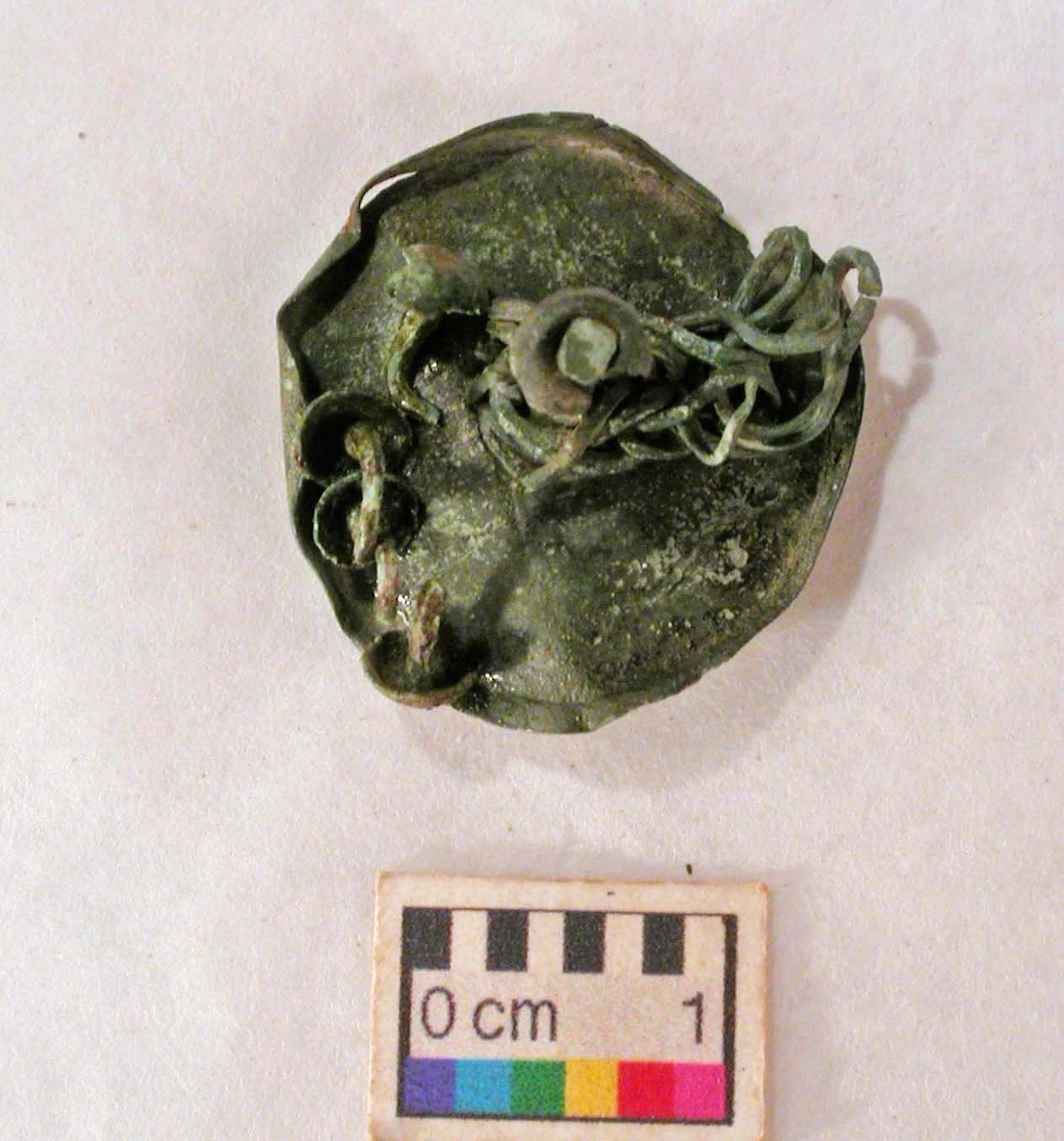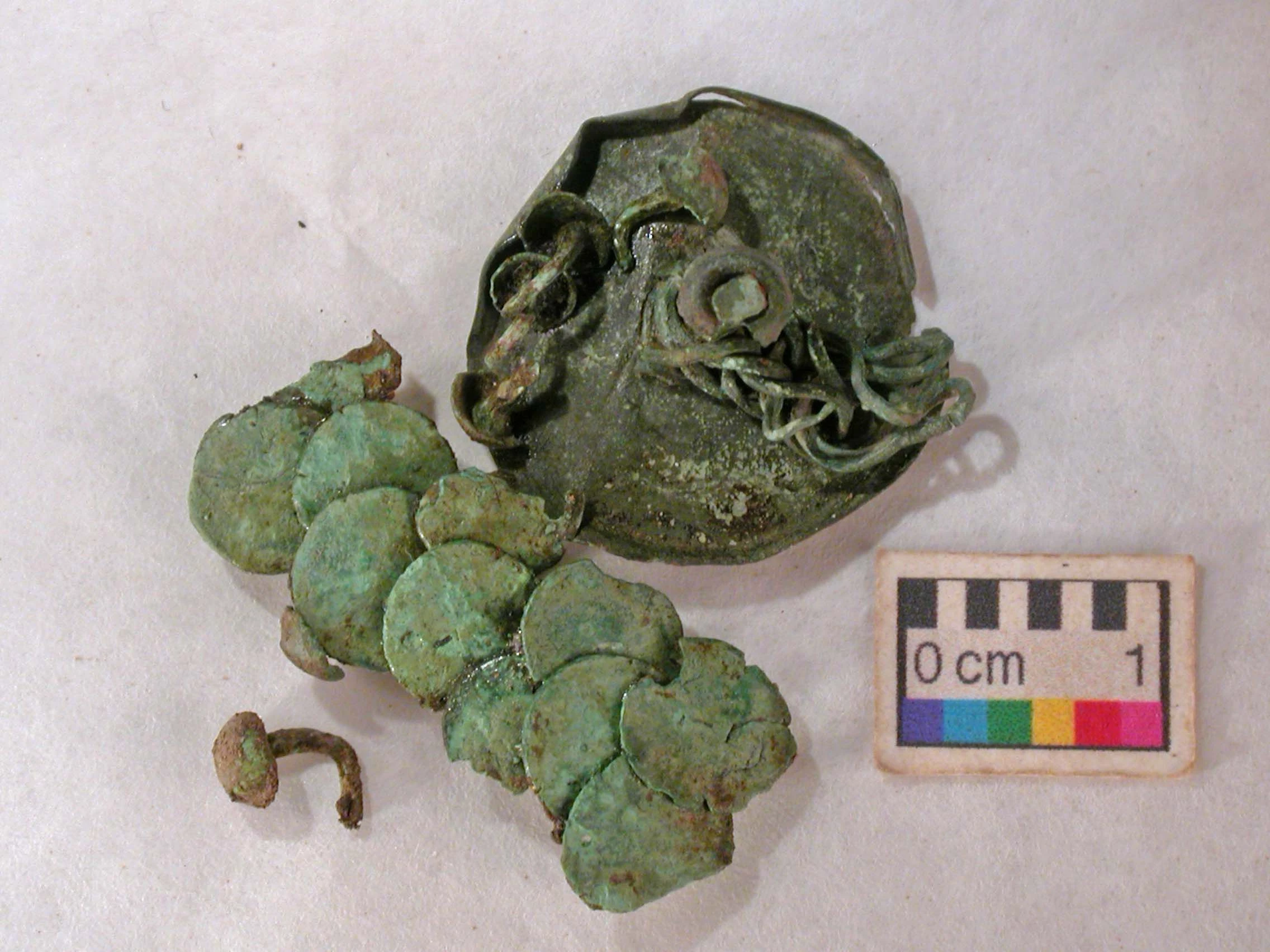The Pin Lifting Challenge. Excavating Roman objects from a soil block
, 24 January 2012
Everything has now been recorded, so the next step is to lift the pins! The decorative pins were once attached to an organic material, possibly leather, this has now gone, replaced by soil and once the soil has been removed there will be nothing holding the pins together. So the challenge is to lift and conserve the pins in such a way to preserve the original fish scale pattern and any dimensions of the group, which may help identify this mystery object in the future.
A bit of a challenge, so I decided to lift only small sections at a time, which does mean breaking up the largest surviving section unfortunately, but I should be able to reconstruct this later.
In the first image you can see that some of the pins are facing up and some facing down, indicating that the material the pins were once attached to was folded, this has perished leaving the pins in this position. So now it’s not just a mystery object it’s also a layered mystery object! Oh joy!
On the next image, outlined in white, is the first section to be tackled; I thought I’d start with the smallest and simplest first! The upper surface of the pins is faced up with Japanese tissue and adhesive. Once dry I excavate round and under the section then lift and turn it over.
Not as straight forward as I thought as something new appears, not just pins, but a disc headed stud. The x-ray also reveals the remains of a chain, plus a line of dome headed studs
On cleaning, the chain can clearly be seen attached to the stud and would have once been suspended from it, possibly linking up to another stud elsewhere on the armour. There are also enough dome headed studs running in a line to suggest they were part of a deliberate pattern. The remains of a tinned surface and therefore white metal finish survive on the upper surface of the stud and at the end of the pin there is a washer or rove identical to that on the plaque featured on the previous blog. So there is a good chance that they were once part of the same object, but again it’s too early to be sure.
The disc and pins are now cleaned and preserved, in the last photo they are laid out as they were in the ground. The dome headed pins were in direct contact with the disc suggesting they were on the same layer as the stud, which was facing downwards in the soil and attached to something folded under the layer with fish scale pins, which were facing up. Hope that makes sense!
Now to tackle the next section and I have a feeling that this may be full of surprises as well.


-outlined-in-white.webp)
-lifted---reverse-side.webp)
.webp)
.webp)

.webp)

Comments - (2)
Thank you
Another fascinating episode in this artefact's life : )
And still intriguing!